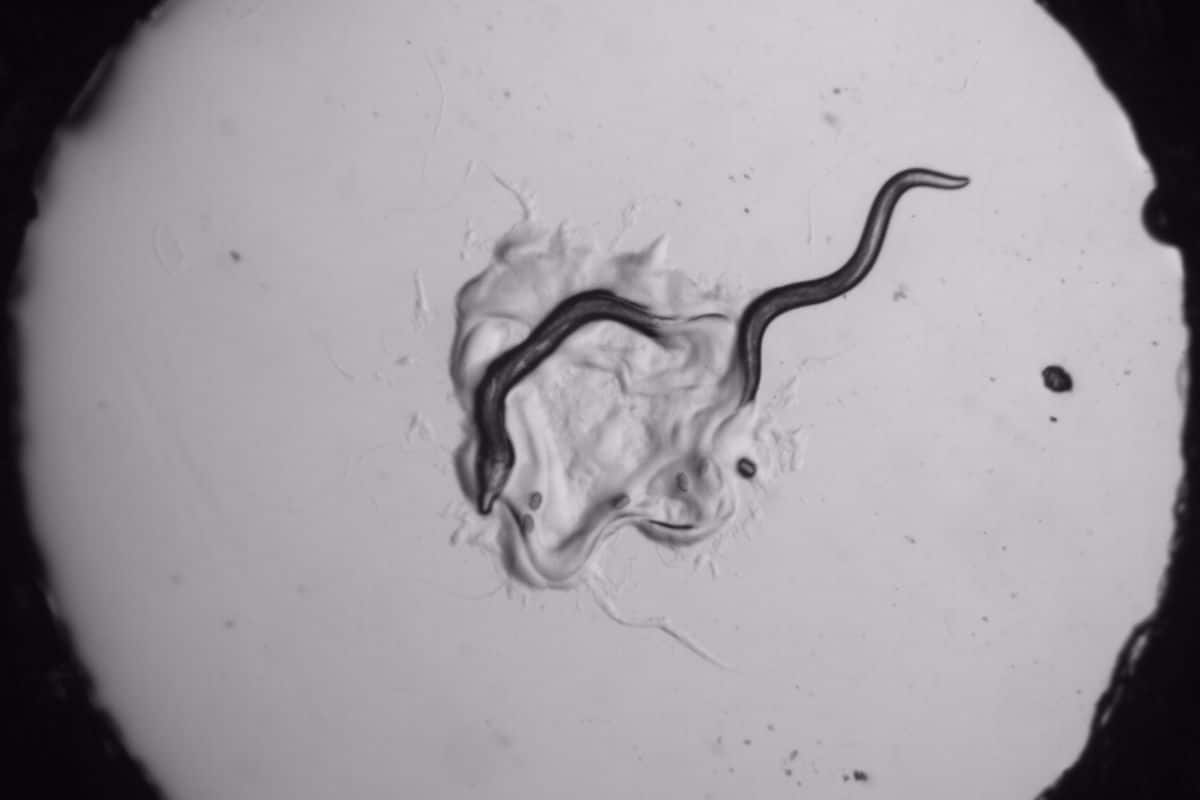

A worm with quite a small brain uses its bite thoughtfully to monitor its food supply.
At first glance, the eating behavior of the roundworm Pristionchus pacificus †P. pacificus) very simple. The only thing this worm, about a millimeter long, does is bite. Does it run into bacteria it can eat? Bite. Does it encounter a larva of the worm Caenorhabditis elegans †C. elegans† Bite. Is it an adult copy of C. elegans against? Bite.
However, neuroscientists have Kathleen Quach and Sreekanth Chalasani from the Salk Institute for Biological Studies diagnosed in their lab: in reality there seem to be quite a few tradeoffs behind the bites of P. pacificus† And that while the animal has to make do with a brain that only contains about three hundred neurons, whereas our brains have about 86 billion.
Bite for six hours
What the situation around P. pacificus and C. elegans makes complex is that C. elegans plays a double role. This worm is both prey of P. pacifus, as a competitor. It feeds on the same bacteria as P. pacificusbut does so one and a half times as fast.
In addition, especially the larvae of C. elegans suitable as prey. that bites P. pacificus dead in one go, after which the meal can begin. Want to P. pacificus assault an adult C. elegansThen it becomes a completely different story. Biting for six hours before the prey/competitor dies is no exception, according to the experiments of Quach and Chalasani. But: a bit C. elegans does drip off after a single bite – so will eat less of the bacteria that P. pacificus it also provided.

One C. elegans-worm (right) flees from a biting one P. pacificus†
In short, the biting behavior of P. pacificus can serve two purposes. Either it’s about eating (bacteria or larvae) or it’s about chasing competitors away to protect the food supply.
Eat or chase away
Now you might think that P. pacificus simply bite into anything that resembles food. If it turns out to be a little bit of bacteria or a larva, he immediately has something to eat. He accidentally sinks his teeth into an adult C. elegans, then he is initially unlucky: he cannot kill such a large worm just like that. But in the longer term, this will have a positive effect on the amount of bacteria available to him.
However, it is more complex than that. If there are little or no bacteria around, it turns out P. pacificus the adult C. elegans– mainly leave worms alone. The same goes for an abundance of bacteria. Only when there is a scarce amount of bacteria should adults C. elegans look out: then put P. pacificus bite it. In addition, it seems P. pacificus to move faster in that situation and to actively look for C. elegans who prey on ‘his’ bacteria.
Despite his small brain, it seems P. pacificus so be pretty smart. Its bite may be intended to eat or scare, depending on the circumstances.
Willingness to bite
Quach and Chalasani are anything but tired of their worms and have plenty of plans for further research. For example, they now only looked at how much energy bacteria or worms P. pacificus yielded, not to specific nutrients or toxic substances. The ‘bite readiness’ also varies per worm; the researchers would like to understand why some copies of P. pacificus are so much more aggressive than others.
But, they write, their ultimate goal is to find out how that handful of neurons make such complex decisions.
Source material:
†Flexible reprogramming of Pristionchus pacificus motivation for attacking Caenorhabditis elegans in predator-prey competition” – Current Biology
†Tiny worms make complex decisions, too” – Salk Institutey
Image at the top of this article: Salk Institute